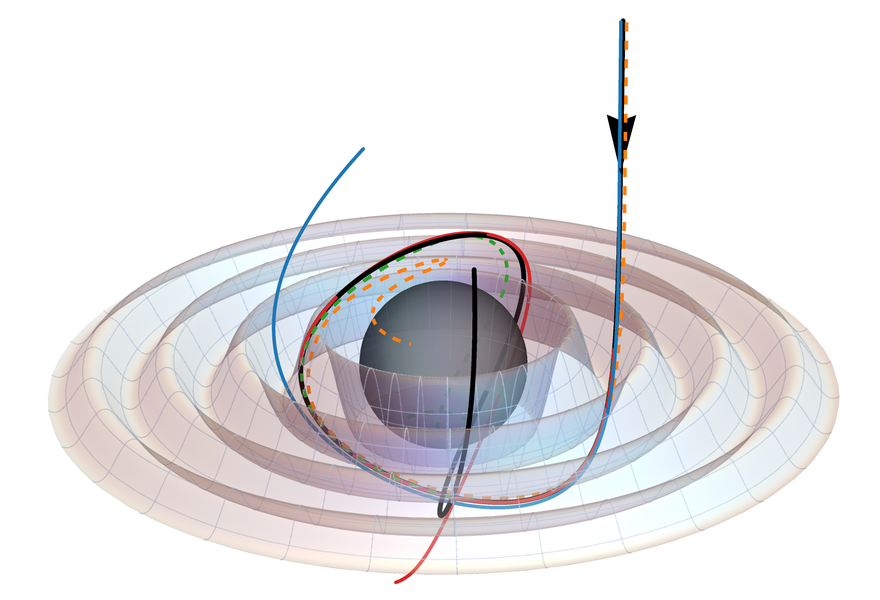Cosmic Waltz

A recent study published in Physical Review Letters shows that electromagnetic observations of stars can reveal gravitational wave ripples around nearby supermassive black holes, as stars appear to “dance” in rhythm with these spacetime ripples. This work bridges the two primary observational methods for studying black holes—electromagnetic imaging and gravitational wave detection—and opens a new avenue for multi-messenger astronomy.
When two black holes merge, they produce gravitational waves that ripple outward, similar to vibrations from a ringing bell. The researchers have developed a new framework for calculating how starlight paths bend in such dynamically perturbed spacetime around black holes, showing how the apparent positions of background stars or plasma features can be modulated. High-angular-resolution instruments like the Event Horizon Telescope could potentially capture these effects and produce movies of gravitational wave profiles.
Zhen Zhong, Vitor Cardoso and Yifan Chen have also demonstrated that several upcoming telescopes can monitor spacetime perturbations by tracking the apparent motion of background stars. This method will be particularly powerful for observing scenarios where smaller compact objects fall into supermassive black holes or when dense clouds composed of hypothetical ultralight bosons are present. Future space-based telescopes might even detect merging supermassive binary black holes using this this approach.
May 28, 2025, 3:43 p.m.